
The symmetry-breaking phase transition in magic-angle graphene. The four ‘flavors’ of Dirac electrons filling their energy levels are represented by four ‘liquids’ filling conical glasses. Credit: Weizmann Institute of Science
A new symmetry-broken parent state discovered in twisted bilayer graphene.
In 2018 it was discovered that two layers of graphene twisted one with respect to the other by a “magic” angle show a variety of interesting quantum phases, including superconductivity, magnetism, and insulating behaviors. Now a team of researchers from the Weizmann Institute of Science led by Prof. Shahal Ilani of the Condensed Matter Physics Department, in collaboration with Prof. Pablo Jarillo-Herrero’s group at MIT, have discovered that these quantum phases descend from a previously unknown high-energy “parent state,” with an unusual breaking of symmetry.
Graphene is a flat crystal of carbon, just one atom thick. When two sheets of this material are placed on top of each other, misaligned at small angle, a periodic “moiré” pattern appears. This pattern provides an artificial lattice for the electrons in the material. In this twisted bilayer system the electrons come in four “flavors”: spins “up” or “down,” combined with two “valleys” that originate in the graphene’s hexagonal lattice. As a result, each moiré site can hold up to four electrons, one of each flavor.
While researchers already knew that the system behaves as a simple insulator when all the moiré sites are completely full (four electrons per site), Jarillo-Herrero and his colleagues discovered to their surprise, in 2018, that at a specific “magic” angle, the twisted system also becomes insulating at other integer fillings (two or three electrons per moiré site). This behavior, exhibited by magic-angle twisted bilayer graphene (MATBG), cannot be explained by single particle physics, and is often described as a “correlated Mott insulator.” Even more surprising was the discovery of exotic superconductivity close to these fillings. These findings led to a flurry of research activity aiming to answer the big question: what is the nature of the new exotic states discovered in MATBG and similar twisted systems?
Imaging magic-angle graphene electrons with a carbon nanotube detector
The Weizmann team set out to understand how interacting electrons behave in MATBG using a unique type of microscope that utilizes a carbon nanotube single-electron transistor, positioned at the edge of a scanning probe cantilever. This instrument can image, in real space, the electric potential produced by electrons in a material with extreme sensitivity.
“Using this tool, we could image for the first time the ‘compressibility’ of the electrons in this system – that is, how hard it is to squeeze additional electrons into a given point in space,” explains Ilani. “Roughly speaking, the compressibility of electrons reflects the phase they are in: In an insulator, electrons are incompressible, whereas in a metal they are highly compressible.”
Compressibility also reveals the “effective mass” of electrons. For example, in regular graphene the electrons are extremely “light,” and thus behave like independent particles that practically ignore the presence of their fellow electrons. In magic-angle graphene, on the other hand, electrons are believed to be extremely “heavy” and their behavior is thus dominated by interactions with other electrons ‒ a fact that many researchers attribute to the exotic phases found in this material. The Weizmann team therefore expected the compressibility to show a very simple pattern as a function of electron filling: interchanging between a highly-compressible metal with heavy electrons and incompressible Mott insulators that appear at each integer moiré lattice filling.
To their surprise, they observed a vastly different pattern. Instead of a symmetric transition from metal to insulator and back to metal, they observed a sharp, asymmetric jump in the electronic compressibility near the integer fillings.
“This means that the nature of the carriers before and after this transition is markedly different,” says study lead author Uri Zondiner. “Before the transition, the carriers are extremely heavy, and after it, they seem to be extremely light, reminiscent of the ‘Dirac electrons’ that are present in graphene.”
The same behavior was seen to repeat near every integer filling, where heavy carriers abruptly gave way and light Dirac-like electrons re-emerged.
But how can such an abrupt change in the nature of the carriers be understood? To address this question, the team worked together with Weizmann theorists Profs. Erez Berg, Yuval Oreg and Ady Stern, and Dr. Raquel Quiroez; as well as Prof. Felix von-Oppen of Freie Universität Berlin. They constructed a simple model, revealing that electrons fill the energy bands in MATBG in a highly unusual “Sisyphean” manner: when electrons start filling from the “Dirac point” (the point at which the valence and conduction bands just touch each other), they behave normally, being distributed equally among the four possible flavors. “However, when the filling nears that of an integer number of electrons per moiré superlattice site, a dramatic phase transition occurs,” explains study lead author Asaf Rozen. “In this transition, one flavor ‘grabs’ all the carriers from its peers, ‘resetting’ them back to the charge-neutral Dirac point.”
“Left with no electrons, the three remaining flavors need to start refilling again from scratch. They do so until another phase transition occurs, where this time one of the remaining three flavors grabs all the carriers from its peers, pushing them back to square one. Electrons thus need to climb a mountain like Sisyphus, being constantly pushed back to the starting point in which they revert to the behavior of light Dirac electrons,” says Rozen. While this system is in a highly symmetric state at low carrier fillings, in which all the electronic flavors are equally populated, with further filling it experiences a cascade of symmetry-breaking phase transitions that repeatedly reduce its symmetry.
A “parent state”
“What is most surprising is that the phase transitions and Dirac revivals that we discovered appear at temperatures well above the onset of the superconducting and correlated insulating states observed so far,” says Ilani. “This indicates that the broken symmetry state we have seen is, in fact, the ‘parent state’ out of which the more fragile superconducting and correlated insulating ground states emerge.”
The peculiar way in which the symmetry is broken has important implications for the nature of the insulating and superconducting states in this twisted system.
“For example, it is well known that stronger superconductivity arises when electrons are heavier. Our experiment, however, demonstrates the exact opposite: superconductivity appears in this magic-angle graphene system after a phase transition has revived the light Dirac electrons. How this happens, and what it tells us about the nature of superconductivity in this system compared to other more conventional forms of superconductivity remain interesting open questions,” says Zondiner.
A similar cascade of phase transitions was reported in another paper published in the same Nature issue by Prof. Ali Yazdani and colleagues at Princeton University. “The Princeton team studied MATBG using a completely different experimental technique, based on a highly-sensitive scanning tunneling microscope, so it is very reassuring to see that complementary techniques lead to analogous observations,” says Ilani.
The Weizmann and MIT researchers say they will now use their scanning nanotube single-electron-transistor platform to answer these and other basic questions about electrons in various twisted-layer systems: What is the relationship between the compressibility of electrons and their apparent transport properties? What is the nature of the correlated states that form in these systems at low temperatures? And what are the fundamental quasiparticles that make up these states?
Reference: “Cascade of phase transitions and Dirac revivals in magic-angle graphene” by U. Zondiner, A. Rozen, D. Rodan-Legrain, Y. Cao, R. Queiroz, T. Taniguchi, K. Watanabe, Y. Oreg, F. von Oppen, Ady Stern, E. Berg, P. Jarillo-Herrero and S. Ilani, 11 June 2020, Nature.
DOI: 10.1038/s41586-020-2373-y
Prof. Shahal Ilani’s research is supported by the Sagol Weizmann-MIT Bridge Program; the André Deloro Prize for Scientific Research; the Leona M. and Harry B. Helmsley Charitable Trust; and the European Research Council.

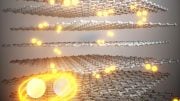
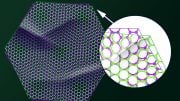
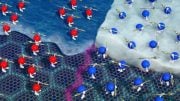
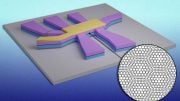

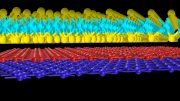
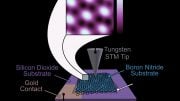
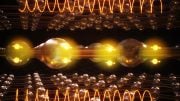
Be the first to comment on "Dirac Electrons Come Back to Life in Magic-Angle Graphene – Unusual Breaking of Symmetry"